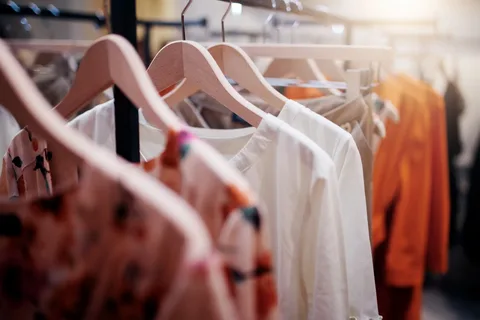Sustainable fashion, often referred to as eco-fashion, is a growing movement in the fashion industry that prioritizes environmental health, ethical labor practices, and conscious consumption. As consumers become increasingly aware of the adverse effects of fast fashion, there is a shift towards more sustainable practices, both at the production and consumption levels. In its simplest form, sustainable fashion aims to reduce the negative environmental impact caused by the design, manufacturing, and disposal of clothing.
The fashion industry has long been notorious for its significant environmental footprint, contributing to pollution, deforestation, and climate change. However, the rise of sustainable fashion offers a brighter, more ethical alternative, aiming to create a harmonious balance between style, sustainability, and social responsibility.
Why Sustainable Fashion Matters
The global fashion industry is one of the largest polluters on the planet. According to various reports, it is responsible for approximately 10% of global carbon emissions, more than international flights and maritime shipping combined. Additionally, textile production is one of the top consumers of water, and millions of tons of textiles end up in landfills each year.
The demand for cheap, disposable clothing has led to a model of “fast fashion,” where garments are mass-produced at rapid rates, with little regard for environmental or human costs. This model leads to overproduction, excessive waste, exploitation of workers, and unsustainable use of resources.
Sustainable fashion, by contrast, takes a holistic approach that encompasses the lifecycle of clothing—from raw material extraction to disposal—and seeks to reduce waste, lower carbon footprints, and ensure fair wages and safe working conditions for garment workers.
Principles of Sustainable Fashion
Sustainable fashion can be broken down into several core principles, all of which contribute to reducing the negative impacts associated with traditional fashion production.
1. Ethical Production
Ethical production is central to sustainable fashion. This means ensuring that workers in the garment industry are paid fairly, treated with dignity, and provided with safe working conditions. Brands that prioritize ethical production are committed to transparency in their supply chains and often seek certifications from organizations such as Fair Trade and Ethical Trading Initiative (ETI).
2. Sustainable Materials
Sustainable fashion embraces the use of natural, renewable, and biodegradable materials instead of conventional synthetic fibers like polyester, which is derived from petroleum. Fabrics such as organic cotton, hemp, Tencel, and recycled polyester are examples of more sustainable alternatives.
3. Circular Fashion
Circular fashion involves designing clothing that can be reused, recycled, or upcycled, creating a closed-loop system where garments are continually repurposed instead of ending up in landfills. Brands committed to circular fashion often offer garment take-back schemes, where customers can return their old clothes for recycling or refurbishing.
4. Reducing Waste
Reducing waste in fashion involves minimizing overproduction, reusing materials, and implementing zero-waste design strategies. Many sustainable fashion brands use fabric scraps or remnant materials to create new garments, while others design collections that can be easily deconstructed and reused.
5. Transparency
Transparency is a key component of sustainable fashion. Consumers are increasingly demanding to know where their clothes come from, how they were made, and the ethical practices behind their production. Brands that value transparency provide detailed information about their sourcing, manufacturing processes, and labor practices.
Sustainable Materials in Fashion
Sustainable fashion relies heavily on the use of eco-friendly materials that reduce environmental impact. Here are some of the key materials used in sustainable fashion:
1. Organic Cotton
Organic cotton is grown without the use of synthetic pesticides, fertilizers, or genetically modified seeds. Compared to conventional cotton farming, organic cotton uses less water and is less harmful to the environment. Brands like Patagonia and People Tree have embraced organic cotton in their collections, offering eco-friendly alternatives to traditional cotton garments.
2. Hemp
Hemp is a highly sustainable material that has been used for thousands of years. It requires little water and no pesticides to grow, making it one of the most eco-friendly fibers available. Hemp also grows quickly and can be cultivated in a variety of climates. As a fabric, it is durable, breathable, and biodegradable.
3. Tencel (Lyocell)
Tencel, also known as lyocell, is a sustainable fabric made from wood pulp, usually from sustainably managed forests. It is produced in a closed-loop system that minimizes waste and uses non-toxic solvents. Tencel is soft, breathable, and biodegradable, making it an ideal fabric for eco-conscious fashion brands.
4. Recycled Polyester
Recycled polyester, made from post-consumer plastic bottles or discarded polyester garments, is a more sustainable alternative to virgin polyester. It reduces waste, conserves resources, and requires less energy to produce than new polyester. Brands like Adidas and Reformation use recycled polyester in their collections to create eco-friendly activewear and casual clothing.
5. Vegan Leather
Vegan leather is an alternative to traditional animal-derived leather, made from materials like polyurethane, cork, or plant-based sources such as pineapple leaves (Piñatex) and apple skins. Vegan leather is less resource-intensive than animal leather, though its environmental impact depends on the specific production process and materials used.
The Impact of Dyeing and Finishing Processes
One of the most polluting aspects of fashion production is the dyeing and finishing process. Conventional dyeing methods often use toxic chemicals, large amounts of water, and energy-intensive machinery. These processes can contaminate local water supplies and release harmful pollutants into the environment.
Natural Dyes vs. Synthetic Dyes
Natural dyes, derived from plants, minerals, and insects, are less harmful to the environment compared to synthetic dyes. While natural dyes require fewer chemicals and water, they are often more expensive and can be less vibrant than their synthetic counterparts. However, many sustainable fashion brands are investing in innovative, eco-friendly dyeing techniques to reduce the environmental impact of garment coloring.
Water Usage and Chemical Processes
Water-intensive dyeing processes are one of the biggest environmental concerns in the fashion industry. Some innovative brands have developed technologies to reduce water usage in dyeing, such as waterless dyeing technologies and digital printing techniques. Additionally, advances in using biodegradable and non-toxic chemicals for finishing fabrics have helped to minimize the negative environmental effects of garment production.
Slow Fashion vs. Fast Fashion
The rise of fast fashion has led to the overproduction of cheap, low-quality garments, often manufactured under unethical conditions. Fast fashion brands typically follow trends and produce clothing at breakneck speeds, encouraging consumers to purchase more frequently and discard items quickly.
Slow fashion, on the other hand, promotes a more thoughtful and deliberate approach to clothing production and consumption. It emphasizes quality over quantity, encourages investment in timeless pieces, and advocates for a reduction in consumption.
The Negative Effects of Fast Fashion
The fast fashion industry is characterized by poor labor practices, such as unsafe working conditions and low wages for workers in developing countries. Moreover, the rapid turnover of trends results in immense waste, as unsold garments often end up in landfills. The cheap production methods used in fast fashion are also responsible for much of the pollution in the fashion industry.
The Principles of Slow Fashion
Slow fashion brands focus on creating high-quality, durable garments that are designed to last. They emphasize ethical sourcing, fair wages, and minimal environmental impact. Slow fashion encourages consumers to purchase less frequently, repair or upcycle garments, and invest in quality clothing that can withstand the test of time.
Technological Innovations in Sustainable Fashion
Technology has played a pivotal role in advancing sustainable fashion, from the development of eco-friendly fabrics to innovative recycling methods. Some exciting developments include:
- 3D Printing: 3D printing allows designers to create garments with minimal waste, using materials like recycled plastic or biodegradable filaments.
- Fabric Recycling: Companies are developing technologies to recycle fabrics, allowing for the repurposing of old garments into new, high-quality textiles.
- Biodegradable Fabrics: Researchers are exploring new biodegradable fabrics that break down naturally, reducing waste in landfills.
The Role of Consumers in Sustainable Fashion
Consumers play a crucial role in driving the shift toward sustainable fashion. By making conscious purchasing decisions, consumers can help reduce the demand for fast fashion and encourage brands to adopt more sustainable practices. Here are some tips for embracing sustainable fashion:
- Buy Less, Choose Wisely: Prioritize quality over quantity, and choose timeless pieces that can be worn season after season.
- Support Ethical Brands: Look for brands that prioritize transparency, ethical labor practices, and sustainable materials.
- Secondhand Shopping: Thrift stores, consignment shops, and online secondhand marketplaces are great places to find unique, sustainable clothing.
- Upcycle and Repair: Instead of discarding old clothes, consider upcycling or repairing them to extend their lifespan.
The Future of Sustainable Fashion
The future of sustainable fashion is bright, but challenges remain. The industry must continue to innovate, reduce waste, and address issues related to overproduction and consumerism. As more consumers demand eco-friendly and ethical products, fashion brands will be pressured to adopt sustainable practices.
Furthermore, policymakers and governments can play a role in promoting sustainable fashion by implementing regulations and incentives for brands that prioritize sustainability. By working together, the fashion industry, consumers, and governments can create a more sustainable and ethical future for fashion.
Conclusion
Sustainable fashion is more than just a trend; it is a movement that seeks to reshape the fashion industry for the better. By embracing sustainable materials, ethical production methods, and conscious consumption, we can significantly reduce the fashion industry’s environmental footprint. Through innovation, collaboration, and a commitment to transparency, sustainable fashion has the potential to create a more responsible and equitable fashion ecosystem for future generations.






Leave a Reply